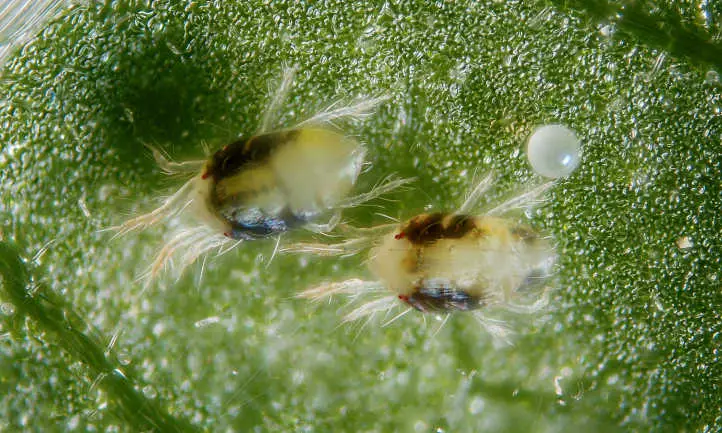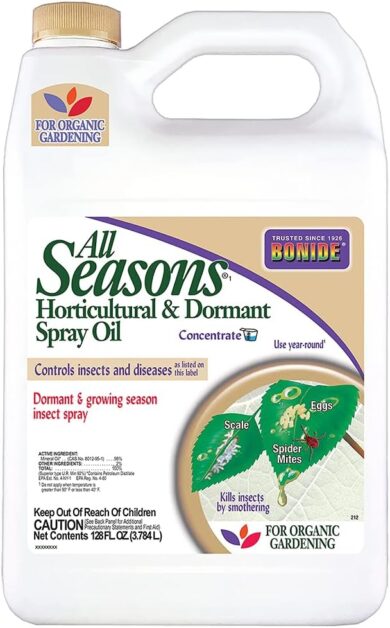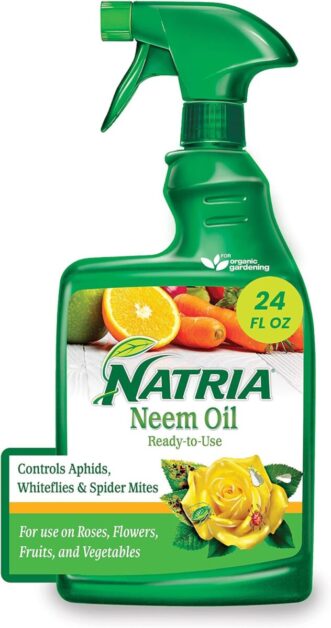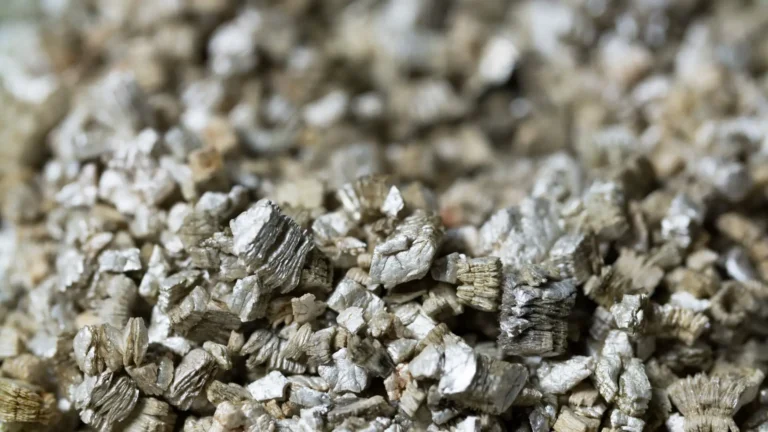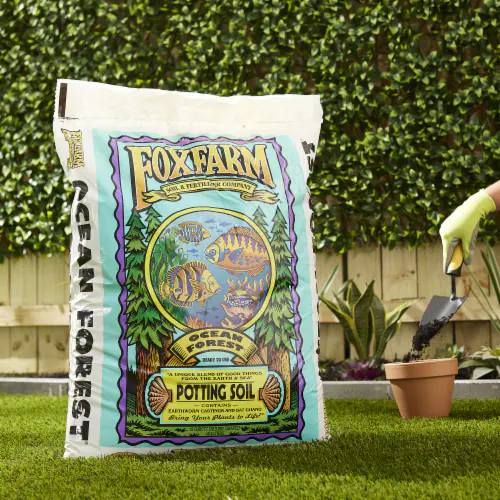Spider Mites: How to Wipe Out These Mite Pests
“Ever noticed tiny pests wreaking havoc on your beloved plants? Meet spider mites – the sneaky villains of the gardening world. These minuscule creatures may seem harmless at first glance, but don’t be fooled. They’re notorious for causing damage to a wide range of plants, from houseplants to outdoor gardens. But fear not!
In this blog, we’ll dive into the nitty-gritty of spider mites and arm you with the knowledge you need to kick them to the curb. Whether you’re a seasoned gardener or just getting started, our expert tips and tricks will help you reclaim your greenery. Say goodbye to spider mite woes and hello to thriving plants!”
Table of Contents
Identifying Spider Mite Infestations: Signs and Symptoms
Spider mites can cause serious damage to plants if left unchecked, so it’s important to be able to identify the signs and symptoms of an infestation.

- Spot the Webbing: Check for fine webbing on plant leaves and stems, especially underneath. This webbing serves as a protective shelter for spider mites.
- Look for Discoloration: Watch out for small yellow or whitish dots on the leaves, which indicate feeding sites of the mites. As the infestation progresses, these dots may merge into larger patches of yellow or bronzed areas.
- Inspect for Movement: Examine the affected plant closely for tiny, oval-shaped creatures moving around. These are the spider mites themselves and are often visible to the naked eye.
- Observe Coloration: Confirm the presence of spider mites by observing their coloration. They can range from pale yellow to red or brown, depending on the species.
- Use a Magnifying Glass: To get a closer look, use a magnifying glass to observe the mites and their distinctive features.
- Tap Test: Perform a tap test by tapping a branch over a white piece of paper. This can dislodge the mites, making them easier to spot.
By following these steps and being able to identify the signs and symptoms of spider mite infestations, you can take timely action to prevent further damage and protect your plants.
The Life Cycle of Spider Mites: What You Need to Know
Spider mites are tiny arthropods that belong to the Tetranychidae family. Understanding their life cycle is crucial in effectively managing and preventing infestations. The life cycle of spider mites consists of six stages: egg, larva, protonymph, deutonymph, adult male, and adult female.

- Egg Stage:
- Eggs are laid on the underside of leaves.
- Control: Remove infested leaves to reduce egg populations.
- Larval Stage:
- Larvae have six legs and feed on plant sap.
- Control: Regularly inspect leaves and use insecticidal soap to target larvae.
- Protonymph Stage:
- Larger and more mobile than larvae.
- Control: Spray neem oil or horticultural oil to suffocate protonymphs.
- Deutonymph Stage:
- Develops eight legs.
- Control: Beneficial predators (e.g., ladybugs, predatory mites) can help control this stage.
- Adult Stage:
- Females are larger than males.
- Control: Introduce natural enemies (e.g., lacewings, predatory thrips) to manage adult spider mites.
- Environmental Factors:
- Temperature and humidity impact the life cycle duration.
- Control: Maintain optimal conditions (e.g., moderate temperature, humidity) to slow down reproduction.
Remember to monitor your plants regularly, use integrated pest management (IPM) practices, and choose the most appropriate control methods based on the specific life cycle stage of spider mites.In the next section, we will explore the various factors that contribute to spider mite population growth and the damage they can cause to plants.🌿🕷️
Factors That Contribute to Spider Mite Population Growth
Spider mite infestations can quickly become a garden nuisance, causing significant damage to plants if not controlled in a timely manner. Understanding the factors that contribute to spider mite population growth is crucial in effectively managing these pests.
- Environmental Conditions: Spider mites thrive in hot and dry environments, typically around 70 to 80 degrees Fahrenheit (21-27 degrees Celsius) with low humidity levels. These conditions facilitate rapid reproduction and infestation, making them more prevalent in greenhouses and indoor gardens.
- Host Plant Availability: Spider mites infest a wide range of plants, including vegetables, ornamentals, and fruit trees. They feed on plant sap by puncturing cells with their mouthparts. When suitable host plants are available, spider mites quickly establish and proliferate, leading to population explosions.
- Management Strategies: Understanding these factors is crucial for effective management. Gardeners should address environmental conditions by controlling temperature and humidity levels. Additionally, monitoring and managing host plants can help reduce the risk of infestations and minimize damage to green spaces.
The following table explains about factors that contribute to Spider Mite population growth
| Factors | Description | Impact on Spider Mite Population Growth |
| Environmental Conditions | Hot and dry environments, with temperatures around 70 to 80 degrees Fahrenheit (21-27 degrees Celsius) and low humidity levels, create ideal conditions for rapid spider mite reproduction. | Favors rapid reproduction and infestation in optimal temperature and low humidity conditions. |
| Indoor Environments | Greenhouses and indoor gardens with controlled environments can unintentionally provide ideal conditions for spider mite growth. | Controlled settings may inadvertently create a favorable habitat for spider mites. |
| Host Plant Availability | Spider mites infest a wide range of plants, including vegetables, ornamentals, and fruit trees. The availability of suitable host plants contributes to their establishment and proliferation. | As preferred host plants become available, spider mites can quickly establish and multiply, leading to population explosions. |
| Piercing Feeding Habits | Spider mites feed on plant sap by puncturing cells with their piercing mouthparts, extracting nutrients for survival and reproduction. | The feeding habits of spider mites contribute to damage on host plants as they extract nutrients, affecting overall plant health. |
| Reproductive Potential | Spider mites have a high reproductive potential, with females capable of laying numerous eggs throughout their lifespan. The short life cycle adds to their ability to rapidly increase in numbers. | High reproductive rates contribute to the quick growth of spider mite populations, making timely intervention crucial. |
| Resistance to Predators | Spider mites may develop resistance to natural predators and certain pesticides, reducing the effectiveness of biological and chemical control methods. | Resistance mechanisms can make it challenging to control spider mite populations using traditional means. |
The Damage Spider Mites Can Cause to Plants
Spider mites may seem small and inconspicuous, but the damage they can inflict on plants is far from insignificant. These tiny pests can wreak havoc on both indoor and outdoor plants, leaving a trail of destruction in their wake. From discoloration and distortions to stunted growth and even plant death, the consequences of a spider mite infestation can be devastating.

- Stippling on Leaves:
- Indicator: Small, discolored specks on leaves caused by mites puncturing plant cells and extracting sap.
- Consequence: As infestation progresses, leaves may turn yellow, wilt, or become necrotic.
- Feeding on Stems and Buds:
- Behavior: Spider mites feed not only on leaves but also on stems and buds.
- Effect: Hinders new growth and reduces overall plant vigor.
- Fine Webbing (Spiderwebs):
- Appearance: Infested plants exhibit fine webbing.
- Impact: Webbing obstructs light, water, and nutrient absorption.
- Aesthetics: Diminishes the plant’s visual appeal.
- Overall Plant Health:
- Weakening: Severe infestations weaken the entire plant.
- Susceptibility: Weakened plants become more susceptible to other diseases and pests.
Prompt identification and timely intervention are essential to prevent further damage and maintain plant vitality. 🌿🕷️
Preventing Spider Mite Infestations: Effective Strategies
Spider mite infestations can cause significant damage to your plants if left unaddressed. Fortunately, there are effective strategies that can help prevent these pests from wreaking havoc in your garden.
- Monitor Regularly:
- Regularly inspect your plants, paying close attention to the undersides of leaves. Spider mites often hide there.
- Look for signs such as yellowing, stippling, or bronzing of leaves, which indicate their presence.
- Hygiene and Cleanliness:
- Keep your garden clean by removing weeds, fallen leaves, and other debris. These can serve as hiding spots and breeding grounds for spider mites.
- Prune dead or infested plant parts promptly to prevent the spread of mites.
- Maintain Plant Health:
- Healthy plants are more resilient to pests. Ensure proper watering, fertilization, and pruning to keep your plants strong and less susceptible to spider mites.
- Avoid water stress, as stressed plants are more likely to be damaged by mites.
- Increase Humidity:
- Spider mites thrive in dry conditions. Increasing humidity around your plants can discourage their growth.
- You can mist your plants or place a tray of water nearby to raise humidity levels.
- Natural Predators:
- Spider mites have natural enemies that help control their populations. Consider releasing predatory mites into your garden to eat the spider mites.
- Spray Plants:
- Regularly spray your plants with water. This helps wash away spider mites and keeps their numbers in check.
- If necessary, add insecticidal soap or oil to your spray for additional control.
Remember, early detection and proactive measures are key to preventing spider mite infestations. By following these guidelines, you can maintain a healthy garden and keep those tiny pests at bay! 🌿🕷️
Natural Remedies for Spider Mite Control: Safe and Eco-Friendly Options
Spider mites can wreak havoc on your plants, damaging leaves and hindering their growth. When it comes to controlling these pesky pests, many gardeners turn to natural remedies that are safe for both the environment and the plants themselves.
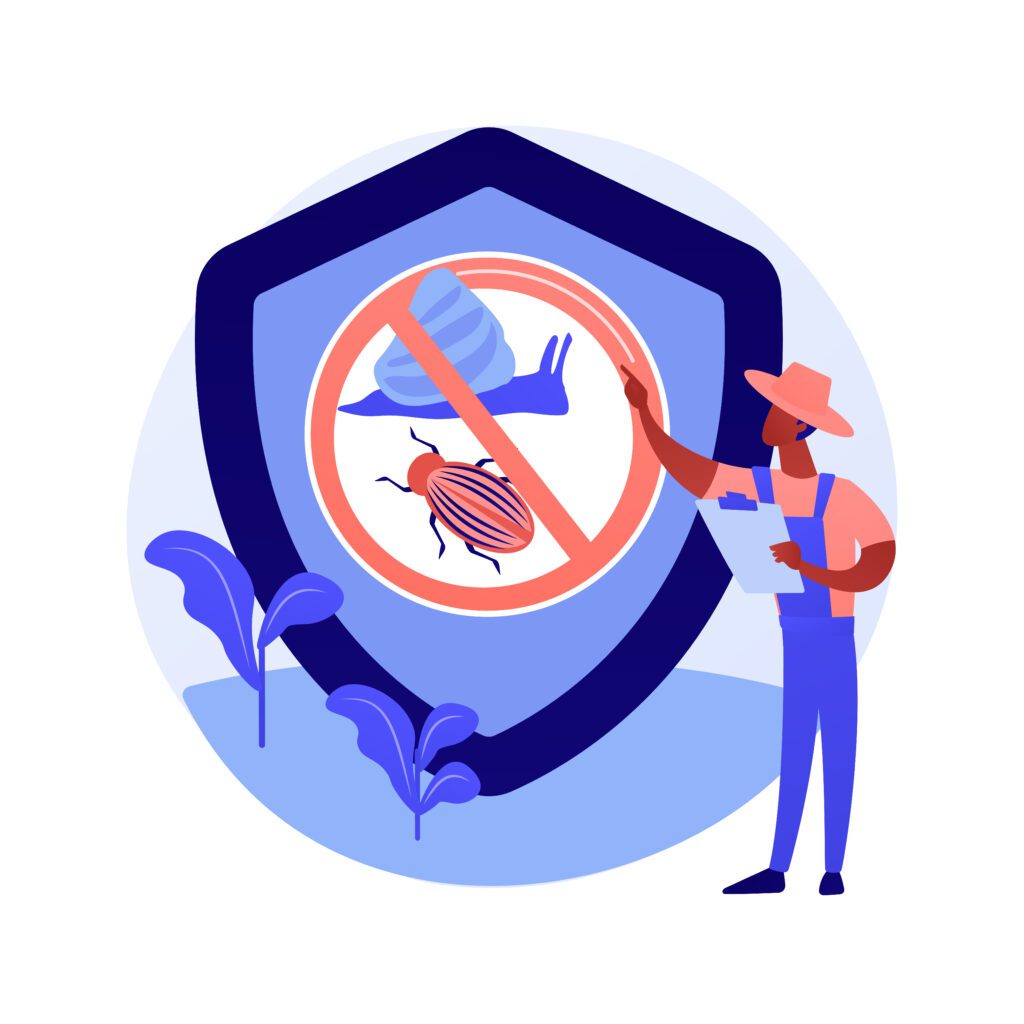
- Neem Oil: Utilize neem oil, a natural insecticide derived from the neem tree. It disrupts the mites’ reproductive cycle and inhibits their feeding, providing effective control.
- Beneficial Insects: Introduce predatory mites, ladybugs, and lacewings into your garden. These insects feed on spider mites, offering a sustainable solution to reduce infestations. Plant diverse flower species to attract these helpful insects.
- Simple Eco-Friendly Methods: Try spraying plants with a water and dish soap mixture to suffocate spider mites. Regularly washing plants with a strong stream of water can also dislodge and remove pests.
- Horticultural Oils: Use horticultural oils to smother the mites and prevent them from breathing. Consistency and thoroughness are crucial for the effectiveness of natural remedies. Regular monitoring and early intervention enhance results.
- Encourage Balanced Ecosystem: Opting for natural remedies not only protects plants and the environment but also fosters a balanced ecosystem in your garden. Understand that natural remedies may require multiple applications and take longer to show results compared to chemical-based solutions. Patience and persistence are key when using eco-friendly options for spider mite control.
Review: Effective Pest Control with Bonide Horticultural Spray Oil and Natria Neem Oil
As an avid gardener, I recently faced a challenging spider mite infestation in my garden, which also included other pests like aphids and whiteflies. To tackle the problem, I decided to use both Bonide Horticultural Spray Oil and Natria Neem Oil, and here’s my experience with each product.
The Bonide Horticultural Spray Oil was incredibly effective in reducing the spider mite population. After just a couple of applications, I noticed a significant decrease in the number of mites, and it also helped control aphids and whiteflies on my vegetables and ornamental plants.
The ready-to-use formulation made the application process straightforward, and I appreciated that it is non-toxic, making it safe to use around pets and children. However, it did require reapplication, especially after rain, and left a slight oily residue on the leaves of some plants. Despite this, its overall performance and ease of use made it a reliable solution for my pest problem.
On the other hand, Natria Neem Oil provided a comprehensive approach to pest management. Made from organic neem oil, it effectively controlled a wide range of pests and also acted as a fungicide, which was a bonus for my garden. The systemic action of neem oil, being absorbed by the plants, provided lasting protection, which I found very beneficial.
Although the smell was quite strong and it could cause leaf burn if applied in direct sunlight or high temperatures, its broad-spectrum efficacy and eco-friendly nature made it a valuable addition to my gardening toolkit. The frequent reapplication was a minor inconvenience compared to the benefits it offered.
In conclusion, both Bonide Horticultural Spray Oil and Natria Neem Oil proved to be effective in managing spider mites and other pests in my garden. Bonide’s ease of use and immediate results were impressive, while Natria’s broader protection and organic composition made it an excellent choice for long-term pest and disease management. Depending on your specific needs, either product could be a valuable asset in maintaining a healthy, pest-free garden.
✔ Effective Pest Control: Controls a wide range of pests such as aphids, mites, and scales.
✔ Non-Toxic Formula: Safe for use around pets and humans, with minimal environmental impact.
✔ Year-Round Application: Can be used in dormant and growing seasons, providing flexibility.
✔ Prevents Diseases: Helps control certain fungal diseases by smothering spores.
✔ Concentrated Formula: Economical as it can be diluted to make multiple gallons of spray.
❌ Frequent Reapplication: May require multiple applications for effective control, increasing labor.
❌ Residue Issues: Can leave an oily residue on plants, which may be undesirable for some users.
❌ Mixing Required: Needs proper dilution, which can be inconvenient compared to ready-to-use solutions.
❌ Odor: Some users may find the smell unpleasant during application.
❌ Limited Effectiveness on Some Pests: May not be effective against all types of pests, requiring additional treatments.
✔ Broad Spectrum: Controls a wide range of diseases, including powdery mildew, black spot, and rust.
✔ Safe for Edibles: Can be used on fruits, vegetables, and flowers, making it versatile for various plants.
✔ Ready-to-Use: Comes in a convenient spray bottle, eliminating the need for mixing or diluting.
✔ Fast-Acting: Provides quick results, often showing improvements within days.
✔ OMRI Listed: Approved for organic gardening, suitable for eco-conscious gardeners.
❌ Frequent Application: May require reapplication after rain or heavy watering.
❌ Potential Plant Sensitivity: Some plants may be sensitive to sulfur, causing leaf burn or damage.
❌ Limited Quantity: The 24-ounce bottle may not be sufficient for larger gardens.
❌ Cost: Slightly more expensive compared to synthetic fungicides.
❌ Residue: Can leave a visible residue on plants, which may be aesthetically displeasing.
Chemical Control Measures for Spider Mite Eradication: Pros and Cons
Chemical control measures can be an effective tool for eradicating spider mite infestations in plant populations. These measures typically involve the application of pesticides specifically formulated to target spider mites.

Advantages of Chemical Control:
- Rapid Reduction in Populations: Chemical pesticides act swiftly, reducing spider mite populations effectively. This quick response helps prevent extensive damage to plants.
- Targeted Approach: Specific pesticides, like those containing abamectin, bifenthrin, or fenpropathrin, directly target spider mites without affecting other organisms.
Drawbacks of Chemical Control:
- Resistance Development: Repeated use of the same chemicals can lead to spider mites developing resistance. Over time, these pests may become less susceptible to the pesticides.
- Non-Target Effects: Pesticides can harm beneficial insects, disrupting the ecosystem’s natural balance. Bees, ladybugs, and other helpful creatures may also be affected.
Additional Considerations:
- Integrated Pest Management (IPM): Combining chemical control with other strategies (such as biological control, cultural practices, and monitoring) can enhance effectiveness while minimizing negative impacts.
- Selective Use: Consider using chemical control only when necessary and as part of a comprehensive approach to pest management.
Moreover, some chemical pesticides can persist in the environment and may pose a risk to human health if not handled properly. Therefore, it is vital to carefully follow the guidelines provided by manufacturers and regulatory authorities when using chemical control measures.
Review for Compare-N-Save Concentrate Indoor and Outdoor Insect Control
I recently used Compare-N-Save Concentrate for pest control in my garden, and I have been impressed with the results. The product proved to be highly effective, quickly reducing the population of aphids, mites, and caterpillars that were plaguing my plants. Within just a few days, I noticed a significant decrease in pest activity, and my plants started to recover beautifully.
One of the standout features of this insecticide is its long-lasting protection. After the initial application, I didn’t have to reapply as frequently as with other products, which saved me time and effort. The concentrated formula means that a small amount goes a long way, making it a cost-effective solution for large garden areas.
Applying the product was straightforward. The mixing instructions were clear, and I found it easy to apply using a standard garden sprayer. However, it is crucial to wear protective clothing and equipment during application to avoid any potential exposure, as the product can be quite potent.
While the product is excellent for outdoor use, it’s important to note that it should be used with caution due to its toxicity. It can be harmful to beneficial insects like bees and butterflies, so I made sure to apply it during times when these insects were less active. Additionally, the chemical odor was quite strong, but it dissipated after a while.
Overall, Compare-N-Save Concentrate has been a valuable addition to my pest control arsenal. It’s effective, long-lasting, and cost-efficient, but it does require careful handling and consideration of its environmental impact. If you follow the guidelines and use it responsibly, it’s a powerful tool for keeping your garden pest-free.
- Highly Effective: Provides strong control over a wide range of pests, including aphids, mites, and caterpillars.
- Long-Lasting: Offers residual protection, reducing the need for frequent reapplication.
- Versatile: Suitable for use on various plants, including fruits, vegetables, and ornamentals.
- Concentrated Formula: A little goes a long way, making it cost-effective for large areas.
- Quick Results: Shows noticeable pest reduction shortly after application.
- Ease of Use: Simple mixing instructions and application process.
- Toxicity: Can be harmful to beneficial insects like bees and butterflies, as well as pets and humans if not handled properly.
- Environmental Impact: Potentially harmful to the environment, especially if overused or not applied according to guidelines.
- Protective Gear Required: Requires the use of protective clothing and equipment during application to avoid exposure.
- Limited Indoor Use: Primarily designed for outdoor use, not suitable for indoor pest control.
- Rain Sensitivity: May need reapplication after heavy rainfall as it can wash away.
- Odor: Has a strong chemical smell that can be unpleasant during and after application.
Integrated Pest Management: A Holistic Approach to Spider Mite Control

Integrated Pest Management (IPM) for Spider Mites:
- IPM offers a holistic approach to spider mite control, emphasizing prevention, monitoring, and intervention.
Promote Plant Health:
- Ensure plants are well-nourished, properly watered, and grown in optimal conditions to enhance resilience against spider mite attacks.
- Healthy plants are less susceptible to damage and can recover more quickly from infestations.
Regular Inspections:
- Conduct regular inspections to detect early signs of spider mite infestation, such as fine webbing, yellowing or stippling on leaves, and tiny discolored spots or eggs.
- Early detection allows for prompt intervention, preventing minor infestations from escalating.
Early Intervention Measures:
- Prune infested leaves to remove spider mite colonies and prevent further spread.
- Utilize targeted treatments, such as neem oil or beneficial insects, to control spider mite populations without harming beneficial organisms.
Proactive and Preventive Approach:
- Adopt a proactive stance by implementing preventive measures to minimize the risk of spider mite infestations.
- By promoting plant health, conducting regular inspections, and intervening early, gardeners can effectively manage spider mite populations and protect their plants from damage.
Early Detection and Intervention: Key to Managing Spider Mites
Early detection and intervention are crucial in effectively managing spider mites in your garden or hydroponic system. These tiny arachnids can rapidly multiply and cause extensive damage to your plants if left unchecked. By being vigilant and taking prompt action, you can prevent a small infestation from turning into a full-blown problem.

Indicators of Infestation:
- Fine webbing on the undersides of leaves and between plant branches serves as a protective barrier, indicating spider mite presence.
- Yellowing or stippling on leaves results from mites piercing plant cells and feeding on chlorophyll.
- Small discolored spots or tiny yellowish eggs on leaves are additional signs of spider mite infestation.
Prompt Intervention:
- Upon detecting spider mites, intervene promptly to prevent further damage and spread.
- Employ non-chemical methods such as physically removing affected leaves or using a strong stream of water to dislodge mites.
- Introduce natural predators like predatory mites or ladybugs to help control spider mite populations.
Effective Management:
- Taking quick action and implementing appropriate strategies is essential for effectively managing spider mites.
- By employing non-chemical methods and natural predators, you can safeguard the health of your plants and mitigate the impact of infestations.
Cultural Practices That Discourage Spider Mite Infestations
Cultural practices play a crucial role in preventing spider mite infestations and maintaining healthy plants.
Proper Plant Spacing:
- Maintain adequate spacing between plants to prevent overcrowding, which creates favorable conditions for spider mite infestations.
- Proper spacing reduces the risk of spider mites spreading from one plant to another and promotes better air circulation, keeping populations in check.
Hygiene Practices:
- Practice good garden hygiene by regularly removing fallen leaves, plant debris, and weeds, which serve as hiding places for spider mites.
- Dispose of removed materials properly to ensure they are completely removed from the gardening area.
- Clean gardening tools, such as pruners and shears, after each use to prevent inadvertent spread of spider mites.
- A clean and tidy garden environment discourage spider mite infestations and promote plant health.
Using Biological Control Agents to Combat Spider Mites: Beneficial Insects
Biological control agents, such as beneficial insects, can be highly effective in combating spider mite infestations in gardens and greenhouses. These natural predators offer a safe, eco-friendly alternative to chemical pesticides, making them an attractive option for those concerned about the environmental impact of traditional pest control methods.
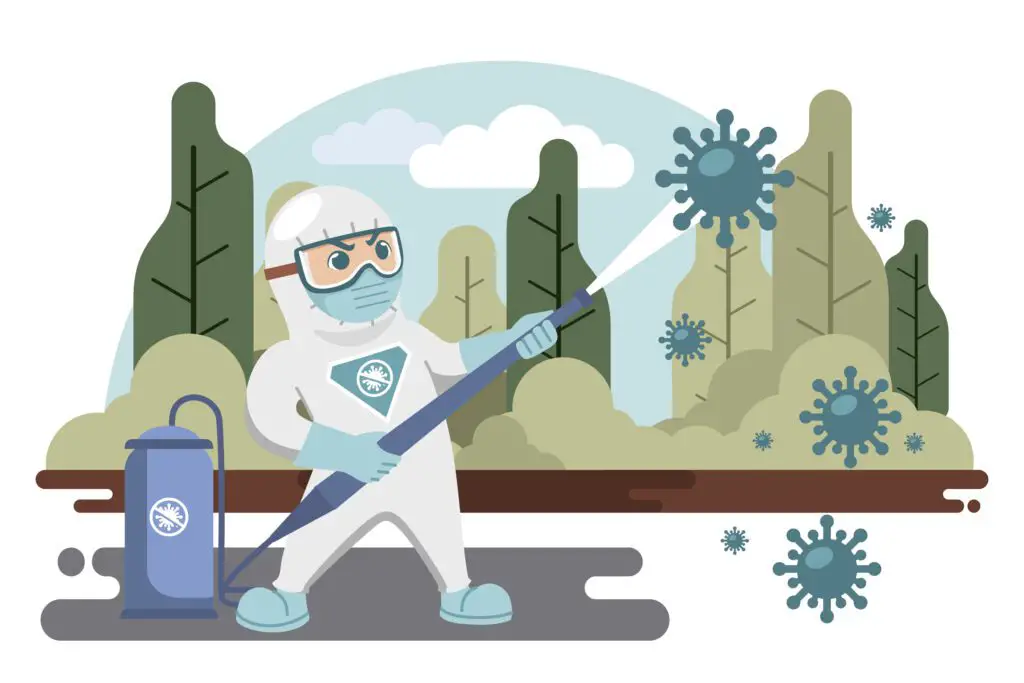
Predatory Mite: Phytoseiulus persimilis
- Phytoseiulus persimilis exclusively feeds on spider mites, making them effective adversaries.
- Upon release, they adapt quickly, reproduce rapidly, and steadily reduce spider mite populations.
- Success depends on releasing an appropriate number relative to infestation severity and providing suitable environmental conditions.
Ladybug (Ladybird Beetle):
- Ladybugs are natural predators of many garden pests, including spider mites.
- They have a voracious appetite, consuming up to 100 spider mites per day.
- By feeding on spider mites, ladybugs control the population and disrupt their life cycle, inhibiting future generations.
Utilizing Beneficial Insects:
- Gardeners can effectively control spider mite infestations by employing beneficial insects.
- These biological control agents offer a natural and sustainable approach to pest management.
- Embracing the power of nature through beneficial insects provides a safe and environmentally friendly alternative to chemical pesticides.
As we explore different strategies for controlling these troublesome pests, it becomes apparent that a holistic approach that embraces the power of nature can yield remarkable results.
Tips for Cleaning and Disinfecting Spider Mite-Infested Areas
Cleaning and disinfecting spider mite-infested areas is a crucial step in effectively managing and preventing further infestations. Spider mites are tiny pests that can quickly multiply and wreak havoc on plants, causing damage to leaves, stems, and overall plant health. To successfully eliminate these pests and create a healthy environment for your plants, it is essential to follow a proper cleaning and disinfection protocol.
Monitoring and Regular Inspections: Essential for Spider Mite Prevention
Regular monitoring and inspections are crucial for preventing spider mite infestations in your garden or hydroponic system. By regularly examining your plants for signs of spider mite activity, you can detect early infestations and take immediate action to prevent further damage.

Look for tiny webs on the undersides of leaves and discoloration or stippling on foliage.
Spider mites are challenging to spot due to their small size, requiring close inspection.
Focus on areas where spider mites congregate, such as the underside of leaves and the joints of stems.
Pay attention to these spots during inspections to detect infestations early.
Regular monitoring allows for early detection of spider mite population growth.
Prevents establishment and severe damage to plants by nipping infestations in the bud.
Stay vigilant and proactive in inspecting plants for signs of spider mites.
Take action promptly to prevent infestations from becoming major problems.
Long-Term Strategies for Sustained Spider Mite Management
Long-term strategies for sustained spider mite management are essential to maintain healthy and thriving plants.
Promote a Diverse Ecosystem:
- Encourage beneficial insects like ladybugs and predatory mites to naturally control spider mite populations.
- These insects feed on spider mites, reducing their numbers and preventing infestations.
Regular Monitoring and Inspection:
- Conduct regular inspections of your plants to detect spider mite populations early.
- Focus on the undersides of leaves, where spider mites tend to congregate.
- Early detection allows for targeted treatments, minimizing damage and preventing spread.
Sustained Management Strategies:
- Implement long-term strategies to ensure sustained spider mite management.
- Understand that every garden is unique, and effectiveness may vary.
- Stay informed about the latest developments in spider mite management for continuous improvement.
Watch more about Spider Mites and how to wipe out these mite pests in below video:
FAQ
How can I identify spider mite infestations on my plants?
Look for signs such as yellow or brown stippling on leaves, fine webbing, and overall stunted growth of the plant.
What is the life cycle of spider mites?
Spider mites go through several stages: egg, nymph, and adult. The duration of each stage varies depending on environmental conditions.
What factors contribute to the population growth of spider mites?
Factors such as high temperatures, low humidity, lack of natural predators, and suitable host plants can contribute to the rapid population growth of spider mites.
How can spider mites damage plants?
Spider mites feed on plant sap, leading to discoloration, wilting, and ultimately, the death of leaves and stems. Severe infestations can weaken the entire plant.
Are there natural remedies for controlling spider mites?
Yes, there are several eco-friendly options such as using neem oil, insecticidal soap, or introducing predatory mites as biological control agents.
What are the pros and cons of chemical control measures for spider mite eradication?
Chemical insecticides can be effective in killing spider mites, but they may also harm beneficial insects and have environmental risks if not used properly.
What is integrated pest management (IPM) for spider mite control?
IPM is a holistic approach that combines various strategies, including cultural practices, biological control, and targeted chemical interventions, to manage spider mite populations.
Why is early detection and intervention crucial in managing spider mites?
Early detection allows for prompt action, preventing the infestation from spreading and causing significant damage to plants.
What cultural practices can help discourage spider mite infestations?
Practices such as regular pruning, proper watering techniques, and maintaining plant health can create unfavorable conditions for spider mites to thrive.
How can beneficial insects be used to combat spider mites?
Beneficial insects like ladybugs and predatory mites can be introduced to the affected area to naturally control spider mite populations.
How should I clean and disinfect spider mite-infested areas?
Remove and dispose of heavily infested plant material, clean affected surfaces with a mild soap solution, and ensure proper sanitation to prevent reinfestation.
Why is monitoring and regular inspections essential for spider mite prevention?
Regular monitoring helps detect early signs of infestation, allowing for immediate intervention and preventing the infestation from becoming severe.
What are some long-term strategies for sustained spider mite management?
Implementing a combination of cultural practices, regular monitoring, utilizing beneficial insects, and integrating various control methods can help achieve sustained spider mite management.

Studied Agricultural Engineering-Plant Protection at University of California, Davis.
Head of Content writing team at Southelmontehydroponics.com

